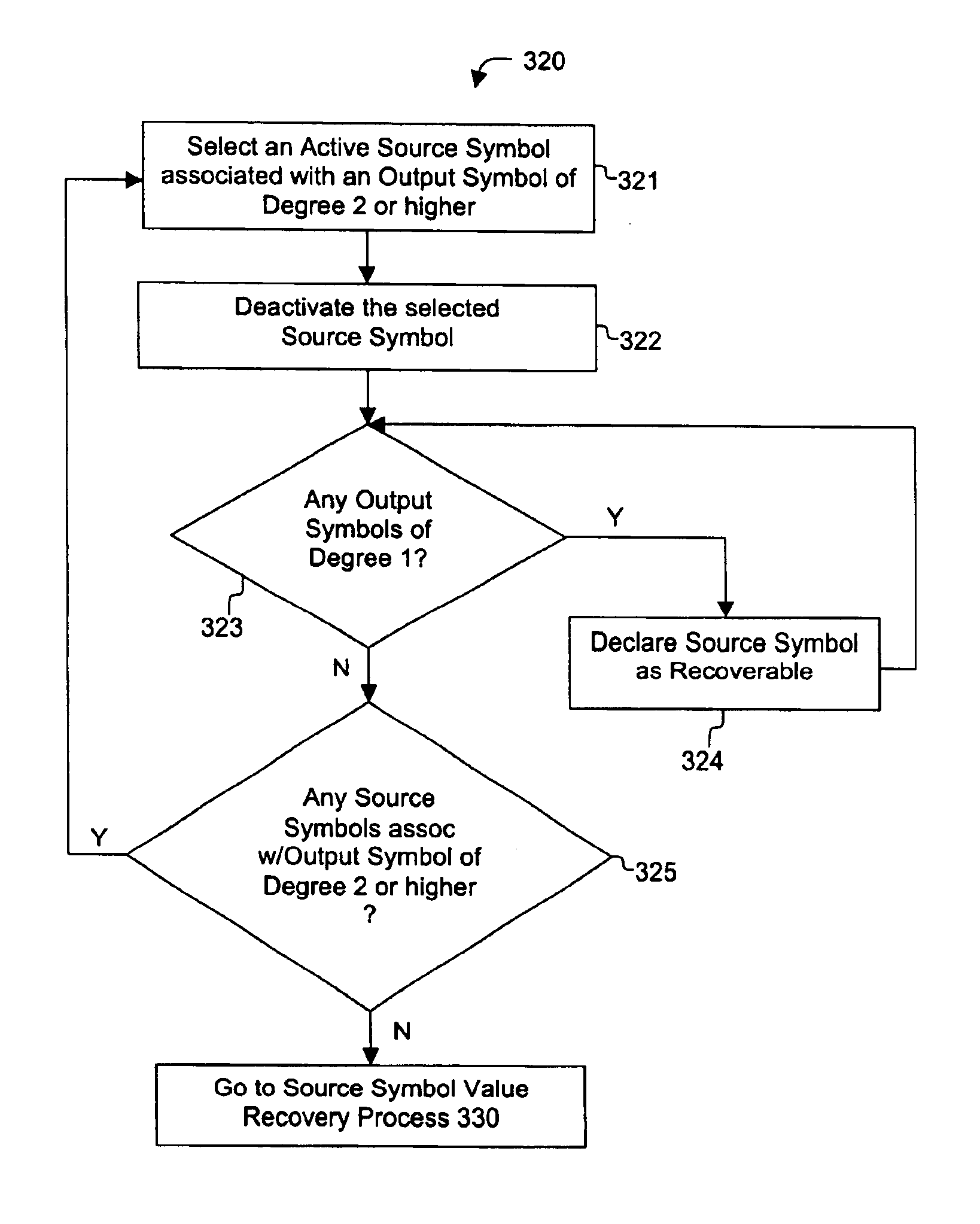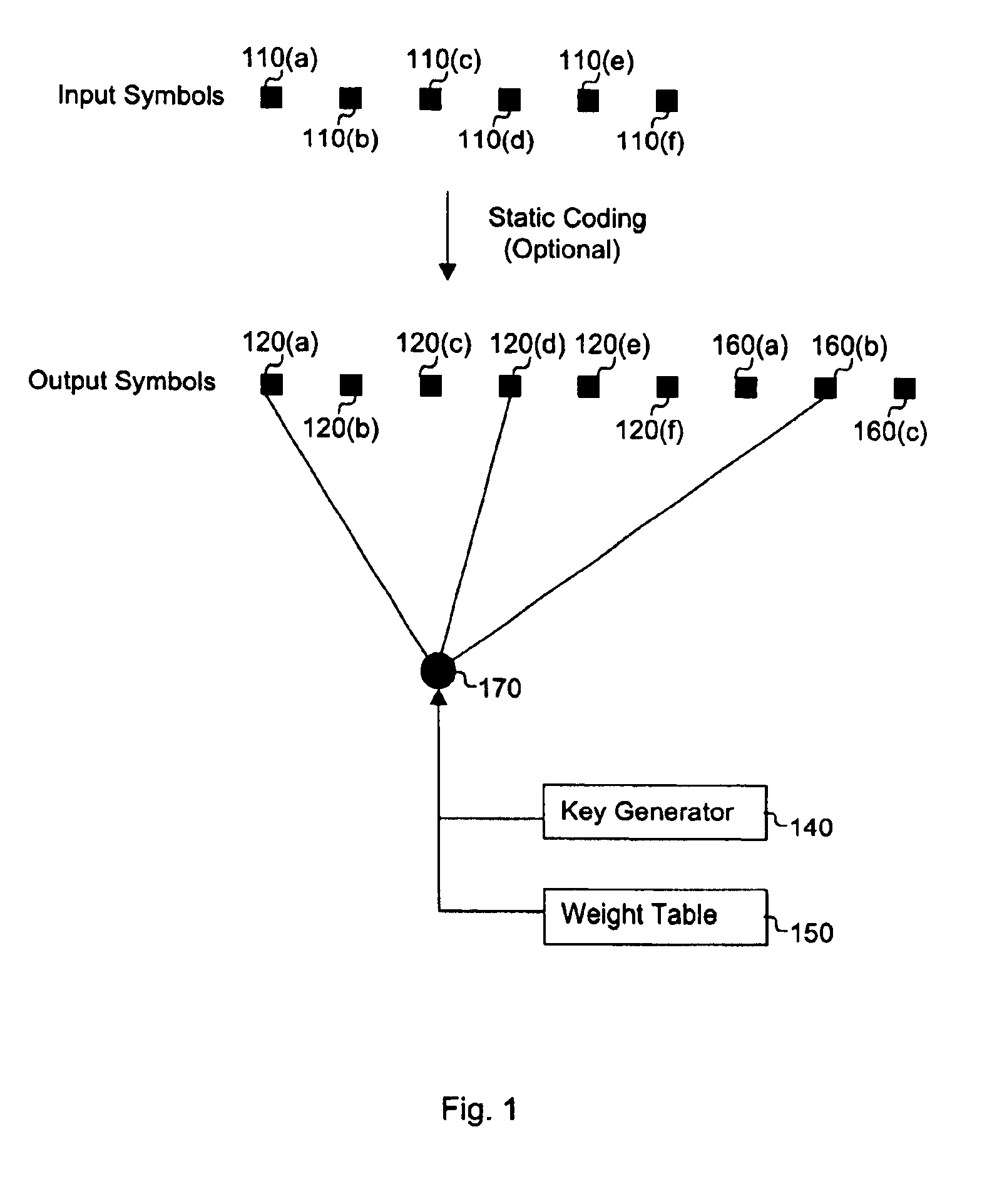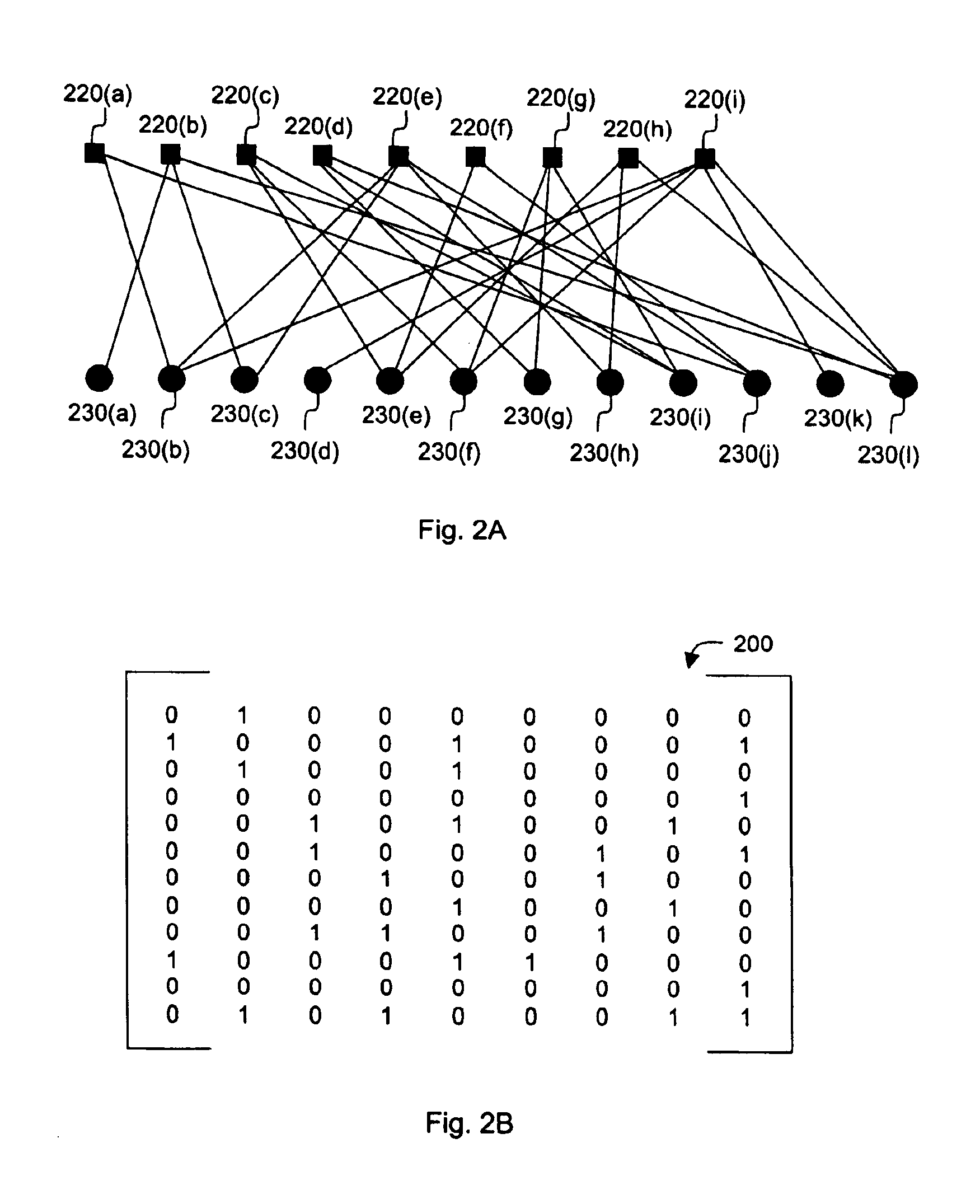Systems and processes for decoding chain reaction codes through inactivation
a chain reaction and chain reaction technology, applied in the field of systems and methods for decoding information additive codes and multi-stage information additive codes, can solve the problems of gaussian elimination running time prohibitively large, decoding process may stop prematurely, and decoder may flag an error
- Summary
- Abstract
- Description
- Claims
- Application Information
AI Technical Summary
Benefits of technology
Problems solved by technology
Method used
Image
Examples
first embodiment
FIG. 4A illustrates the start-up process 310 illustrated in FIG. 3. Initially at 311, a determination is made as to whether any output symbols of degree one are present. If so, the source symbol associated with that output symbol is recovered at 312. The process then returns to 311, where a subsequent determination is made as to whether any other output symbols of degree one remain in the code. If at 311 no output symbols of degree one remain, the process proceeds to the source symbol selection and deactivation process 320, further described below.
second embodiment
FIG. 4B illustrates the start-up process 310 illustrated in FIG. 3. In this embodiment, an output symbol of degree one is identified at 315. Subsequently at 316, the source symbol associated with the identified output symbol is recovered. Next at 317, a determination is made as to whether any other output symbol of degree one remains. If so, the process returns to 316 where the associated source symbol is recovered. If not, the process proceeds to the source symbol selection and deactivation processes described below.
In one embodiment of the invention, recovery of source symbols described in 310 occur temporally before the recovery of deactivated and recoverable source symbols referred to in 320. However, the invention is not limited thereto, and recovery of the source symbols identified in 310 may occur substantially concurrently with the recovery of the deactivated and recoverable source symbols in process 330 in alternative embodiments of the present invention.
FIG. 5 illustrates ...
PUM
 Login to View More
Login to View More Abstract
Description
Claims
Application Information
 Login to View More
Login to View More - R&D
- Intellectual Property
- Life Sciences
- Materials
- Tech Scout
- Unparalleled Data Quality
- Higher Quality Content
- 60% Fewer Hallucinations
Browse by: Latest US Patents, China's latest patents, Technical Efficacy Thesaurus, Application Domain, Technology Topic, Popular Technical Reports.
© 2025 PatSnap. All rights reserved.Legal|Privacy policy|Modern Slavery Act Transparency Statement|Sitemap|About US| Contact US: help@patsnap.com



